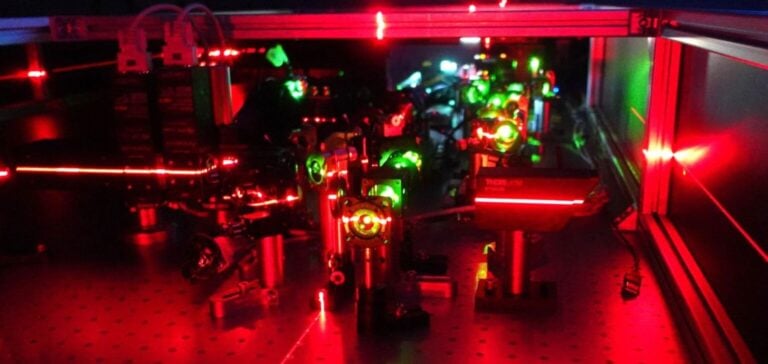Nuclear fusion requires extreme conditions, including plasma temperatures in excess of 100 million degrees Celsius. To achieve and maintain these conditions, Tokamak Energy is developing an innovative laser system capable of accurately measuring the density of hydrogen fuel. This precision is vital to stabilize the plasma and ensure efficient fusion. The device, currently being tested in Oxford, represents a major step towards controlling the fusion process.
The crucial importance of plasma density
Tadas Pyragius, physicist at Tokamak Energy, stresses that understanding and controlling plasma density is essential to the success of nuclear fusion. A laser beam passes through the plasma to measure this density, providing key information for maintaining fusion conditions. This technique not only ensures the stability of the process, but also its long-term economic viability. Innovations in laser diagnostics pave the way for optimized fusion management.
Combining technologies for a successful merger
To complement its interferometer system, last year Tokamak Energy integrated a Thomson diffusion laser diagnostic system on its ST40 tokamak. This device provides detailed readings of plasma temperature and density at specific locations, complementing the average density measurements offered by the new interferometer. The combination of these technologies significantly increases the precision of plasma control, a further step towards commercial nuclear fusion. These technological advances are crucial to the future development of fusion power plants.
A vision for the future of fusion energy
Tokamak Energy’s aim is to demonstrate the full potential of high-temperature superconducting magnets with its ST80-HTS prototype, scheduled for 2026 at Culham. This pioneering project aims to inform the design of the ST-E1 pilot plant, which is expected to generate up to 200 MW of net electrical power in the early 2030s. The success of ST-E1 would mark a decisive step towards the deployment of 500 MW commercial fusion power plants in the 2030s. Nuclear fusion thus represents a potentially inexhaustible and clean source of energy for the future.
Tokamak Energy’s ST40 device has already reached melting temperatures of 100 million degrees Celsius, a record for a compact spherical tokamak. These experiments, essential for the future specifications of the ST80-HTS and ST-E1 models, demonstrate Tokamak Energy’s ability to push back the boundaries of fusion technology. However, even if the advances made by Tokamak Energy bring humanity closer to a revolutionary energy source, the road to a commercially viable fusion power plant is fraught with technical and scientific challenges.





















